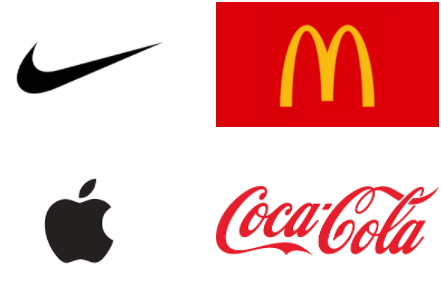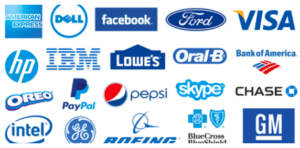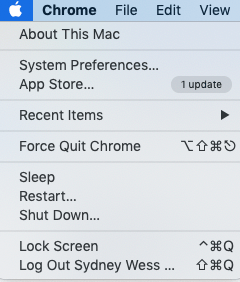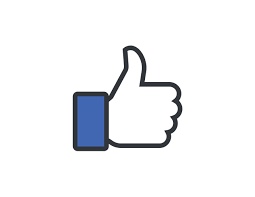Logo vs. Icon: What is the Difference?
Logos are recognizable brand assets that should stand out in the marketplace. While icons are equally recognizable, these symbols are used to support strong user experiences. As a result, they should be universal and help users navigate platforms.
Updated January 24, 2022
Need help selecting a company?
Based on your budget, timeline, and specifications we can help you build a shortlist of companies that perfectly matches your project needs. Get started by submitting your project details.
What is the difference between a logo and an icon?
Logos and icons are both visual elements employed by brands to provide optimal services to customers. However, each component has very different ideal use cases that result from their key benefits.
A logo is primarily created for the purpose of brand recognition, marketing, and awareness. This is why logo design professionals strategically select parts of a logo in order to portray certain aspects of a brand’s identity.
In comparison, icons are images that are meant to elevate and ease the user experience.
Including icons on platforms is extremely important to companies. According to a 2018 study, 88% of users avoid websites after a bad user experience.
To retain and satisfy all types of customers, icons are meant to be simple and as universally recognizable as possible. They’re not meant to stand out or be especially unique like a company logo. The goal is that users recognize what the icon does without needing a textual explanation.
While both visuals, logos are key for branding purposes while icons focus more on improving UX.
To understand more about how logos and icons differ, this article will dive into how companies use each visual asset to provide additional value to their customers.
Looking for a logo design company? Browse our list of reputable graphic designers who specialize in logo design.
What Is a Logo?
A logo is a brand symbol that is closely associated with a company’s brand identity. Made up of carefully selected colors, shapes, symbols, and typography, logos are designed to accurately reflect their company’s services and values.
These brand assets are key to building brand awareness and helping customers identify companies. According to recent data released by The Manifest, most consumers notice changes to a logo before slogans or color changes, indicating their significance to a company’s brand identity.
Due to their close ties to a company’s identity, logos are commonly displayed on packaging, promotional materials, and products. Once established, logos become a key visual branding asset for companies.
Some of the most iconic logos include Nike’s swoosh, McDonald’s Golden Arches, Apple’s minimalist logo, and Coca-Cola’s classic logotype.
4 Most Memorable Logos Examples

Even without company names or products displayed, consumers automatically can identify a brand based on their logo.
In addition to making companies stand out, logos are used to portray brand values. Even the colors that companies choose to use in their logos can impact how consumers perceive their brand.
For instance, many tech companies — like Facebook, Twitter, and Venmo — use the color blue in their logos to portray feelings of trust.

Source: Logo Maker
Other elements that define a logo — such as the shape, typography, and emblems — contribute to the overall brand identity and create brand characteristics for a company, driving an audience’s perception of a business.
Businesses can pick and choose which parts to include in their designs to make the end result most applicable to their services and appealing to customers.
Additional resource,‘The 7 Logo Characteristics and Make a Logo Great.’
What Is an Icon?
An icon is an image that represents an action, file, action, or specific web page. Online, icons are graphical user interface (GUI) components that facilitate processes when users interact with them.
Essentially, icons are images that users interact with online to trigger an action. For example, an image of a paper airplane is often used to indicate a “send” function on emails or other platforms.

Source: Seekicon
These images are recognizable and help customers quickly understand, making them a key component in interface designs. Because people process visuals 60,000 times faster than text, icons help users navigate a website or software system more effectively.
While logos are unique, icons can be used over and over again by different brands to portray similar ideas.
Sometimes, companies use their logos as an interactive icon. For instance, when scanning the toolbar on an Apple computer, the iconic Apple logo is used as an icon that allows users to log off, force quit, or access system preferences.

Icons like these can be activated with a click or double-click. Consequently, icons are a key part of a site’s UI/UX and can vastly improve a user’s experience on a platform.
While functional, icons can still play an important role in developing a brand identity. For example, Facebook’s “like button” is an icon because users are able to interact with it.

Source: Wikipedia
Although it is not the company logo, and is not used to identify the company, the “Like Button” still portrays the social media platform’s brand identity. Using the company’s recognizable blue color, people automatically remember that it’s used to like photos on the platform.
Logo vs Icon: Design Requires a Different Scope of Work
Despite seeming similar, logos and icons require vastly different design processes. This means that professional design teams will undertake different scopes of work when engaging with your company on projects.
Here’s what you need to know about both projects:
Logo Design
To create a logo that accurately portrays your brand and stands out in the market, many companies choose to hire a logo design agency.
Browse our list of logo design companies who can help you define your brand attributes and communicate them to your audience.
At the beginning of the process, most design companies collaborate with their clients through a discovery phase. This phase involves the designer learning about the company’s goals for the design as well as the established brand.
At this point, clients will need to provide information on target audiences, design inspiration, and existing branding materials at this point of the project. This allows the designers to create a logo that will fit seamlessly into the brand suite.
Icon Design
Icon design, on the other hand, is a part of the UX design process. If you’re developing a website or software system, the UX team you’re working with will develop screens and wireframes depicting each page of the platform. These plans will include icons and the functionality they will provide.
Often, these UI/UX teams will work with graphic designers to ensure that the platform looks appealing and reflects the company’s brand.
They will be able to create icons that will establish user flows and improve the user’s navigation, but will still use the colors and styles that align with brand assets.
Browse our list of UX Design Companies to build an intuitive and user-friendly platform.
Critical Differences Exist Between Logo vs Icon
Logos and icons are both graphic assets that can help companies communicate ideas and strengthen their brand. Although they are both images and they may look similar, they’re very different and shouldn’t be conflated.
While logos are used in marketing materials and should promote a brand, icons are more functional. Because icons can impact UI/UX and streamline navigation, they’re usually designed by a UI/UX team.
In comparison, most companies should rely on a logo design or branding partner to create an unique logo that stands out in the marketplace.
Additional Reading
Need help selecting a company?
Based on your budget, timeline, and specifications we can help you build a shortlist of companies that perfectly matches your project needs. Get started by submitting your project details.